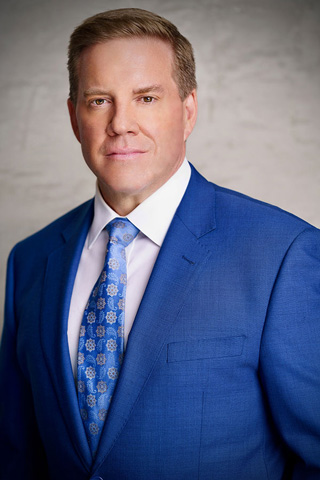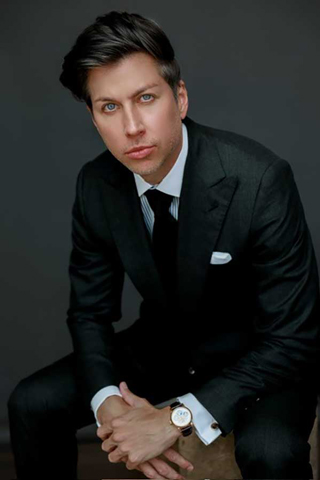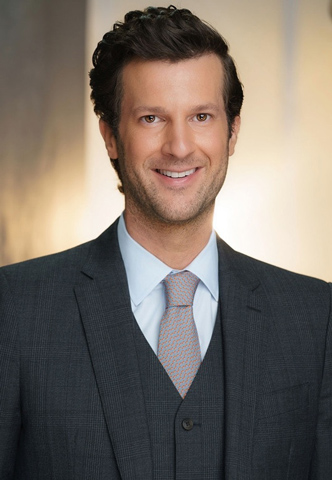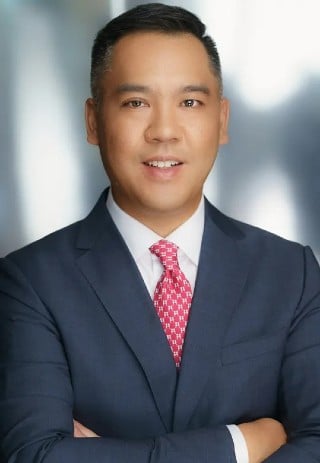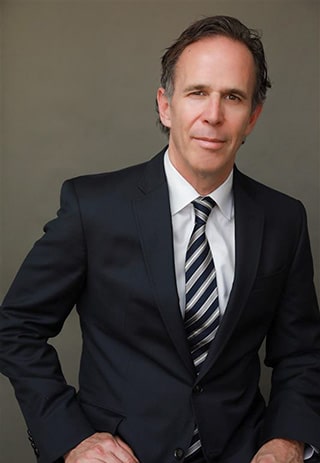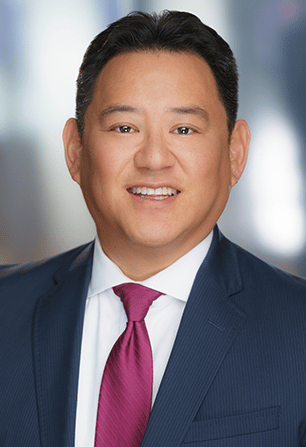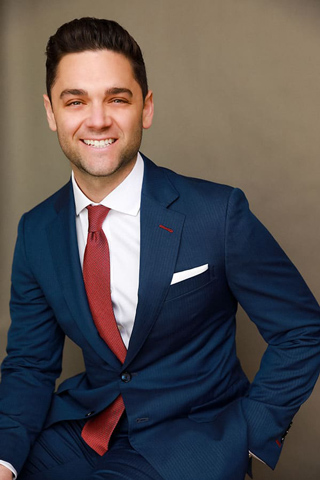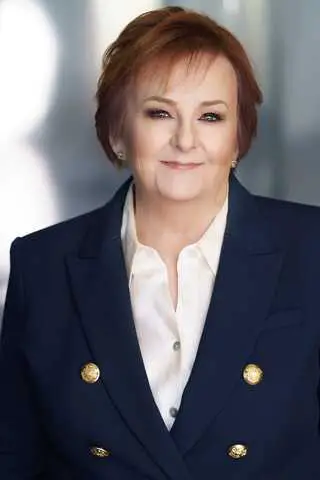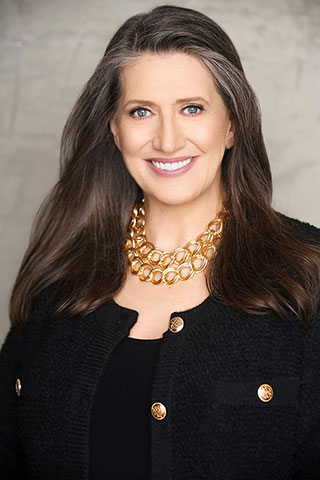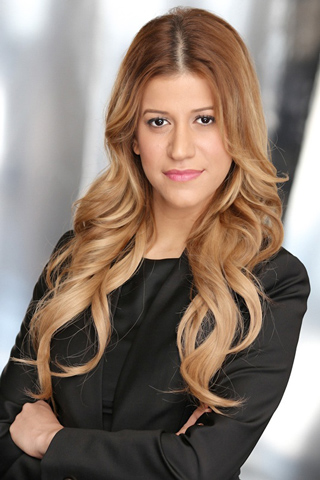The Value Of Being Yourself In The Courtroom
By Senior Partner Colin Jones, Esq.
Originally featured on page 8 of October 2021’s of the Journal of Consumer Attorneys Associations for Southern California’s Advocate Magazine.

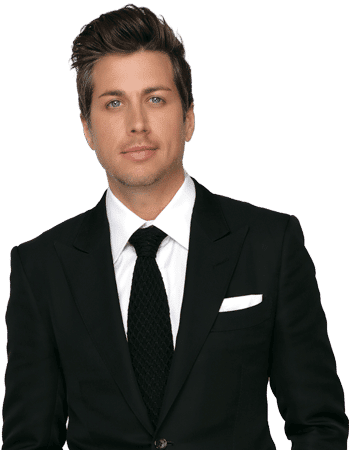
What kind of lawyer do you want to be? Of course, we all want to be respected, successful, and for many of us, admired. Most trial lawyers have an ego that needs to be fed and there is no better way to satisfy that need than by hitting a big jury verdict. We are surrounded by lawyers who do that all the time, hitting insurance companies for eight-, nine- and ten-figure verdicts. We sit in awe of how they achieved such a feat, so we can’t help but ask: How did they do it? We read deposition testimony and add their questions to our outlines.
We attend seminars and Continuing Education Courses so we can take away those golden nuggets that may take us to the promised land. There is undeniable value in this, but what often happens is that we try to repeat verbatim what we read and lose the spontaneity of what our case gives us. We pull their trial transcripts and mimic their closing arguments. Who hasn’t used, or wanted to use, the Mona Lisa Story? The Black Limo Story? Or the Fighter Jet example?
These are all brilliant ways to add context before asking for huge noneconomic awards. But be careful, they aren’t for every case. Overuse is misuse and will do more harm than good. How many people have stood in front of a jury and talked about “Brutal Honesty?” I’ve read and heard Nick Rowley do it a dozen times. He is the master of the concept. I’ve tried to copy it word for word. The psychology and understanding behind why we use the term brutal honesty is a gift for us as trial lawyers, but failing to do it in our true authentic voice is a colossal mistake.
While imitation may be the sincerest form of flattery, I propose that authenticity is the real recipe for success.
A Time to Kill…and A Time to Edit
When I first saw Matthew McConaughey do his tear-jerking closing argument for the jury in, “A Time to Kill,” I was so moved that I knew, “that’s the type of lawyer I want to be.” I had goosebumps watching it. Watching a lawyer who was so connected to their feelings and emotions, so deeply invested in their client’s pain, that they could express the human losses so powerfully that jurors were left in tears was moving.
So, for the first few years I was a lawyer, I set out to do just that. I practiced law through a place of emotion, passion and empathy (granted it wasn’t that far a stretch for someone like me who some would say – well most would say – is a sensitive guy).
I took this approach regardless of the case, the facts or the client. Even on the smallest of injuries I would profess to the jurors the lifelong human losses my client would experience. But it just didn’t work. It was a constant flurry of emotion.
Telling a story involves many things: undisputed facts, mixed in with logic and reason, topped with emotion and passion. Creating this “recipe” for a powerful story is a delicate balance. We have to edit what we say and not overdo any one ingredient. Just like a chef must balance the salt and the acid, so too must a trial lawyer balance the emotional congruency of what they present. We can’t be so over the top with everything we do if the facts don’t warrant it. We lose credibility, we lose jurors and we lose sight of the case at hand. You must try the case you have, not the case you want.
A Few Good Men…and Few Good Lessons
Next, I went through my, “You can’t handle the truth” phase. Every lawyer knows this line and if you don’t, please go rent “A Few Good Men” tonight. When I saw Tom Cruise thundering away at Jack Nicholson on the stand during crossexamination, I had my next “Eureka Moment.”
It hit me: I had been doing things wrong all along. Passion is overrated, I have to be dominant in the courtroom with a commanding presence and a merciless approach to every witness, every expert and every defense counsel I cross paths with. Every expert deposition I took for the next few years was done with an attacking mindset. Some may call the approach cocky, rude and disrespectful (and they would probably be half right).
Once you get in this mindset, it is hard to turn it off. It permeates the trial and this air of superiority oozes out of you and into the jury box. Juries were frankly turned off by it. I know this because they would tell me after verdicts. Why did you have to be so rude to that doctor? Why did you have to be so aggressive with that witness? Why did you have to fight with everyone? I mean, can you blame them for feeling that way? Have you seen two people fighting before? It is uncomfortable to watch people verbally joust and you just want to get away from it.
Now, there is a time and place for the take-no-prisoners approach, but only after the jury gives you permission. This happens when a defendant, defense lawyer or so-called defense “expert,” has acted, behaved and testified in a way that deserves such force. Every trial lawyer can feel this moment. It is a switch that turns on with the jurors. And when they give you the green light, they have blessed your attack.
In a recent trial it was discovered that the defense expert had been provided sub rosa of my client doing the most normal of things: getting in and out of his car, carrying groceries to his front door, and walking around his neighborhood. I knew this expert had viewed the sub rosa, because he provided it in his expert file (unbeknownst or unnoticed by defense counsel). For one calendaring reason or another, this deposition was rescheduled. When the deposition came back on calendar and the expert file was resent to me, the sub rosa had been removed.
When questioned at deposition about it, the expert made it clear that the sub rosa was of no value. It wasn’t helpful to show if my client was injured, in pain or “faking it.” When asked why it was removed from his file, the expert started to waver and was visibly uncomfortable. It turned out, defense counsel told him to remove it and to tell me that he “didn’t rely on it.” He also told me that never in his 25-year career had he been asked to do something like this and was not happy about the request.
At trial, the expert and I discussed this sub rosa and why it was removed from his file. When this information came out, there was a collective death stare at the defense lawyer by the jury. We knew this would happen, and fortunately, this was the last witness for the defense. The jury had blessed the attack on the defense team, and in closing, I pulled no punches. That jury came back with a verdict 10 times the highest offer.
Gerry Spence, The Ranch…and The Authentic You
After a few years of trying to figure out what kind of lawyer I was, I was lucky enough to spend a month at the Gerry Spence Trial Lawyers College. At the Ranch there is a realness to the way trial skills were presented. The Ranch helps you to tap into to your authentic self. Walls are broken down by doing things like reciting an original poem and singing a song while you stand on a bench in front of 50 people you just met. Sunrise hikes in silence and solitude help you to connect with your inner voice. The camaraderie of three weeks in rural Wyoming without TV, internet or cell phones gives you an opportunity that we don’t get in our busy lives: finding ourselves.
Beyond that, Gerry is so engaging and commanding with his approach to life, to trial, and to self-exploration that you can’t help but be smitten by the process. Suits are traded in for Levi’s and those shiny Italian loafers are replaced by cowboy boots. I absolutely ate it up. Can you guess what the first thing I did was when I got home? I bought a pair of cowboy boots. I then wore them to work, to dinner and to my next trial. But you know what? It didn’t work. I felt ridiculous because I strayed away from the most important thing I learned at the Ranch: to be me.
Suffice it to say, for my first couple of years as a lawyer, I wasn’t my true authentic self. I was a mash-up of the Hollywood Lawyers, Rural lawyers, and City Lawyers that I drew inspiration from. And while you should adopt some of the tools that other lawyers have used successfully, it is a nuanced process. You can’t replace the gifts that are uniquely yours, which brings us to the art of being you.
There is an art to being you. It is a process that takes discovery, work and sacrifice. It isn’t easy. It isn’t fun. And at times, it flat out hurts. But when you make it to the other side, when you are truly yourself, something beautiful happens: Jurors begin to relate to you and their heads nod when you conduct voir dire. Clients feel like you “get” them and aren’t just some lawyer in a fancy suit who can’t relate to their problems. Defense lawyers want to grab a drink with you. Insurance companies want to pay you. And this isn’t because you are saying what they want to hear, or hiding behind some facade of what you think a lawyer should be, but instead it is because you radiate that you are the genuine and authentic version of yourself. When you’re the genuine article, you radiate credibility. No games, no fronts, no faking.
Have you ever watched someone be fake? It is painful to bear witness to, almost to a level of discomfort. When you are pretending to be a lawyer that you’re not, the world can see right through it. You come off as rehearsed and disingenuous. You have to strip away the mask, stop acting like a lawyer and be the real person you are underneath all the armor. This means dropping all the walls we have created to protect ourselves. So, how do we achieve this?
Be Vulnerable Both with Your Feelings and Your Case
Putting your best traits forward as a human being is easy, but to truly show the world your complete self, you have to be vulnerable to the negative things as well. Psychologists often refer to it as “conscious vulnerability,” which is when you choose to lean into your vulnerableness. Choosing to put yourself in a situation where you could get hurt, embarrassed or laughed at is a difficult thing to do. It takes an enormous amount of courage to face these situations. This idea of conscious vulnerability is something we can practice in both our personal and professional lives.
So how can we be consciously vulnerable as lawyers? It starts first with understanding the danger points and vulnerabilities in our case and in ourselves. All cases have them, some more than others. You cannot go into a trial and hide the bad facts. You just can’t. Any reasonably competent defense lawyer will hammer them. If you have a bad fact and you don’t come out with it, when defense does, you’re doomed. You look phony, sneaky and chip away at your own credibility by doing so. Any trial lawyer knows the moment when this happens. You feel like you got punched in the gut. The jurors look at you differently, and you realize you blew it. So, look deep inside yourself and ask, “What scares me about this case?” Because if it scares you, it scares everyone else. If you’re feeling vulnerable about a part of your case, do the deep dive and explore it. The case you present is as much a reflection of you as your client, so make sure you’re telling the right story.
Once you find the fear points of your case, explore them in voir dire. Lean into them. Own them. Share them. From voir dire through openings, weaved throughout witnesses and experts, and again in closing, embrace them. Take the sting out. Imagine sharing all the bad facts, all the things the defense lawyer is waiting to reveal. You not only gain credibility, but you take the “gotcha” moment out. And better yet, you have a defense lawyer with nothing left to say. There is absolutely nothing worse in a trial than a defense lawyer bringing up a bad fact that you didn’t. You have lost all your credibility. Credibility is like a well, you can only dip into it so many times before it’s empty. I spend 90% of my voir dire on danger points. If your first questions to a jury in voir dire are how they feel about tort reform or can they award millions of dollars, you either have the best case I have ever seen, or you need to think about reshaping your approach.
Voir dire is the first conversation between you and the courtroom full of human beings who could be on your jury. It is your first chance to show your authenticity by owning the imperfections of your case and not glossing over them like they don’t exist. When you own the negative and become vulnerable, it inspires people to express their true feelings.
This is your one and only chance to learn who these folks are, what they hold dear and what makes them tick. This learning process doesn’t happen by rattling off pre-planned questions in rapid-fire succession and moving on to the next. It doesn’t happen by burying the negative and vulnerable parts of your case, hoping they never see the light of day. And it certainly doesn’t happen by trying to convince folks to agree with how you feel about your case. Let’s be frank: Voir dire is really an exercise in exclusion. Find those people who hear the negatives about your case and remain open minded, that’s a juror you want on your panel.
In my last trial I represented a motorcycle rider who was lane-sharing between cars on the highway. I was worried. I was worried because I’ve been on the freeway when a motorcycle comes whizzing by me and I hate it. I roll my eyes and say to myself “this guy is going to hurt himself. “And maybe if I look into that deep, dark place I don’t want to share, I even believe that if that motorcycle rider is taking these kinds of risks, then maybe they deserve what happens. I think most folks who look deep down, feel the same.
So instead of hiding this fact, I owned it. I asked who on the jury has been in that same position and felt those same emotions. Who thinks it is dangerous? Reckless? And if that person gets hurt, they have nobody to blame but themselves? After all, it is a risky endeavor to be on a motorcycle, so why shouldn’t justice be reduced for those who assume the risk, right? This got everyone talking. Remember, the goal of voir dire is a dialogue between the folks in the room, not about listening to yourself talk. This allowed me to share what I was scared about, see the folks in the room who agreed, bring out bias and prejudice, and look for those jurors who could be fair.
One of the most powerful things during the jury selection process occurs when a juror comes out on your side. Someone who is so strong for your case that they would be the perfect juror. Someone who wants to award millions of dollars, hates insurance companies and knows what it is like to live with chronic pain. Jackpot! Inside you’re jumping with joy, but let’s be real, any defense lawyer worth their salt is getting this person off for cause or at least through a peremptory challenge.
Why not practice what you preach about authenticity and do what we call a “credibility move?” That is to say, acknowledge how incredible that juror is for you and how lucky your client would be to have someone like them fighting on their behalf in that jury room. But you must also acknowledge that it wouldn’t be fair to the defense to have a juror who favored the plaintiff so heavily. At the end of the day, you want to win fair and square and perhaps that juror would be a better fit on another case. I can tell you with 100% certainty, that when you do this, the dynamic in the room changes. Folks see you as an honest and credible lawyer who they can follow.
Identify Negative Self-Talk and Reframe
We always have an inner monologue going on in our heads: “Do these jurors like me?” “Will this judge rule in my favor? “Am I a good lawyer?” While this is a common way of thinking, it often devolves into a fear-based roadblock, which can make us question our own value as lawyers and as human beings. When we dig deeper, it is nothing more than a defense mechanism to help shield us against disappointment. After all, if you keep telling yourself it will be a low jury verdict, it isn’t that surprising when it happens. This negative inner dialogue can limit your ability to believe in yourself, your albitites, and reach your fullest potential. In the world of social media, this becomes an even greater challenge: How can you keep up with the most recent post about that $25 million verdict on the no-offer case? How could I ever be that big of a success?
Not only do we have negative self-talk within our own personal expectations of who we are, but we have them within our cases. Every case has its negatives, and many cases have multiple negatives. Let’s look at a common one: gaps in treatment. Defense lawyers love to talk about gaps in medical treatment and say that plaintiffs aren’t hurt because of them. If your client waited a week to see a doctor after a crash, they aren’t hurt. If they wait two months between specialists, they aren’t hurt. If they wait a year to follow through with a surgical recommendation, then they can’t be that hurt. Sometimes, even we buy into this rhetoric.
Cognitive Reframing
So, how do we fix it? There is a concept known as cognitive reframing. When you engage in this process you shift your mindset so you’re able to look at a situation or person with a slightly different perspective. Ask yourself, what are the other possible reasons this could have happened? Let’s take the gap in treatment: Many of our clients are working-class, salt-of-the-earth people. Maybe they didn’t go to a doctor because they had to work to put food on the table, a roof over their heads and clothes on their backs. Maybe they didn’t seek emergency room care because they were scared of the costs. Or maybe they don’t speak the language and aren’t versed in the medical-legal process.
As lawyers, we work in this world on a daily basis and we can often lose sight that most folks have no clue how to navigate the healthcare and legal system. The oldest trick in the defense playbook is the “pick and choose.” Pointing out one thing without any context. Looking at facts in isolation. Your job is to reframe that gap, shed light on all the facts, and put back into context why things happened the way they happened.
This reframing happens in all areas of your cases. I am currently litigating a wrongful-death case where the heirs (two sisters), haven’t spoken to their brother, who passed away as a result of the crash, in over 30 years. The defense sent me a 998 for a waiver of costs, claiming there are no noneconomic damages. In response, this is the email I sent: “Counsel, Do you ever watch American Pickers on television? It is a great show on the History Network. Premise is, these two guys go around the country looking for unique antiques – cars, watches, signs, memorabilia, you name it.
What you learn is, some folks keep their antiques all nice and shiny on display in the house where they enjoy it every day. And some folks have that beat-up old project car in the garage that hasn’t moved in decades. When interviewed about the cars, they all say the same thing: “we are going to get around to it one day.” Sometimes 20, 30 or 40 years pass before they start the project, and honestly, some never do.
But you know what? Nine out of 10 times when they are offered money to buy that broken-down eye sore of a car, they say no. Why is that? Well, it is because there is always the hope that one day, they can reconnect with that car and finish the job.
Much like family dynamics, people can go weeks, months, years or even decades and not talk to one and other. But just like that old car, they take comfort, and often hope, that one day they will reconnect with that family member. And that sir, is my case. That chance to reconnect with family was taken away from my clients and to say that has no value, is to ignore the most basic of human emotions: love for family.
CACI 3921 is clear on the damages allowed. While you are correct that there are no economic damages, the noneconomic damages are still very much present. Grief, sorry and mental anguish as an example. The thought that there is zero grief, is a shocking concept; whether siblings are best friends or estranged, family is family. The good working folks of the community where this guy is tried know this.”
Shortly after this email was sent, the lawyer told me off the record that he liked the story, hadn’t thought about it in this way, and would discuss mediation with the carrier. Now, whether this cognitive reframing ultimately works in reshaping how the lawyer, the insurance company or jurors see the case, is yet to be determined. What is clear, though, is that looking at your case through a new lens, can open everyone’s eyes.
The Takeaway
The best advice I can give is this: take a risk. You may succeed and you may fail. I can’t guarantee it will give you that eight-figure verdict. I can’t guarantee it will give you the praise of your peers. What I can guarantee you is this: You will learn. You will grow. You will become a better person, a better partner, a better friend and a better lawyer. At the end of the day, that is true success.
Colin Jones is both a member of the American Board of Trial Advocates (ABOTA) and the 2020 President of the National Trial Lawyers: Top 40 under 40.


